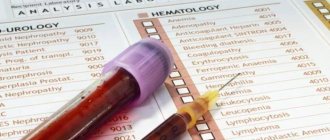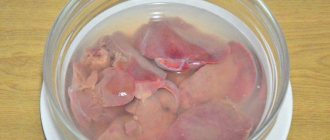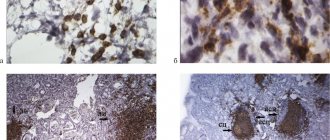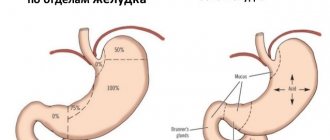Attention!
The information in the article is for reference only and cannot be used for self-diagnosis or self-medication. If you notice any symptoms of the disease, contact your doctor.
Gastritis (ICD code K 29) is a lesion of the gastric mucosa. It causes dystrophic-inflammatory changes in tissues, disruption of the regeneration process, and atrophy of epithelial cells.
During the course of the disease, the affected glands are replaced by fibrous tissue. With a long-term disease, all functions of the stomach are upset. Its secretory activity is disrupted earlier than others.
FGDS
Gastroscopy (fibrogastroduodenoendoscopy, FGDS) is an analysis of the upper gastrointestinal tract (stomach, esophagus and duodenum) using a probe equipped with a camera. The doctor can see the condition of the mucous membranes directly during the procedure, and if necessary, takes pictures or video recordings from the camera.
The use of a gastroscope allows not only to make visual diagnostics, but also to take samples of the stomach contents and tissues, that is, to do a biopsy and pH measurements. We will consider a blood test for gastritis below.
pH-metry
pH-metry consists of studying the acidity level of the stomach, duodenum, and esophagus. The acidity of the gastric contents gives grounds to judge the presence of inflammation.
Gastric juice is also examined using the probing method. Using special instruments built into the gastroscope, the doctor takes samples. Usually, before such a procedure, the patient is given “test breakfasts”, which stimulate the production of gastric juice. Analysis of its contents allows not only to establish the fact of gastritis, but partly to understand its nature: in a disease determined by Helicobacter pylori, a lot of gastrin is found in the gastric juice. What other tests are there for gastritis?
Probing of the stomach
Probing of the stomach is not permitted in case of organ stenosis and after surgery. In such cases, the level of acidity can be measured using an acid test: the patient takes special medications that, when interacting with hydrochloric acid in the stomach, form dyes present in the urine.
To diagnose gastritis caused by the bacteria Helicobacter pylori, several types of blood tests can be performed for gastritis: for antibodies to this bacterium, laboratory analysis of a biopsy or stool, as well as a respiratory test, when the patient first drinks juice in which carbamide (urea) has been dissolved and labeled carbon atom. Helicobacter pylori bacteria are capable of breaking down urea at a high rate, thereby increasing the release of carbon dioxide during exhalation. It is the study of its level in exhaled air that makes it possible to judge infection.
Diagnosis of gastritis
Before treating the disease, a thorough diagnosis is carried out. The diagnosis is made by a gastroenterologist or therapist. It relies on physical examination data, complaints and patient history. The specialist prescribes the following additional examination methods to the patient:
- Acidity analysis. It is carried out during probing with sampling to study a portion of gastric juice. Then it is tested in a laboratory.
- Definition of Helicobacter pylori. This is done in several ways. This bacterium is determined by stool analysis. The HpSA antigen gene is detected. A respiratory test is also carried out, based on identifying an increased content of bacterial metabolic products in the exhaled air.
- Examination of the mucous membrane. Produced using a fiber gastroscope. Its flexible tube is inserted through the mouth into the lumen of the organ. Fill the stomach with gas. The fiber gastroscope transmits information to the monitor. During the examination, some areas of the mucous membrane can be taken for biopsy.
- Study of the secretion and composition of juice. It is taken when probing the stomach. It is then studied in the laboratory using reagents.
Based on these data, the form of gastritis is identified and therapy is prescribed.
X-ray
In the diagnosis of gastritis, the X-ray method is also used, but in terms of information content it ranks second after gastroscopy. The patient should not eat food for twelve hours, and in order to take an x-ray, he swallows a special contrast agent. After this, the doctor examines the stomach, changing the position of the patient’s body. X-ray examination can show the relief and tone of the organ, see the presence of ulcers, gastritis, and tumors. Gastritis is often indicated by characteristic changes in the mucous membrane, but in many cases a repeat procedure must be done to identify the permanent nature of such changes.
All of the above methods help diagnose chronic gastritis. The acute form at an early stage requires an initial examination of the patient and clarification of the medical history. Sometimes mucosal biopsy and FGDS are used to diagnose it. In children, tests, gastroscopy and ultrasound examination of the abdominal organs are used. If it is difficult to make a diagnosis, they take samples of the mucous membrane and gastric juice, do x-rays with a contrast agent, and pH measurements. Why might you need a general blood test for gastritis? More on this later.
Causes of gastritis
This disease is classified as a multifactorial pathology. It is impossible to identify one reason for its development. Its development is determined by the influence of a combination of external and internal factors.
Exogenous causes
This group includes factors influencing from the outside. These include the following reasons:
- Food products. Some types of food, when consumed in large quantities, have a negative effect on the gastric mucosa. This group includes salty, sour, pickled, fatty and fried foods. Alcoholic drinks are especially harmful. Alcoholic gastritis is considered a separate type of disease. In this case, symptoms appear after drinking large amounts of alcohol.
- Chemical substances. Acute gastritis occurs when aggressive acids and alkalis penetrate into the stomach cavity. The surface layer of the mucous membrane is destroyed. Stomach tissues lose their ability to protect themselves from hydrochloric acid. This group includes taking certain medications - corticosteroids, aspirin, some antibiotics and non-steroidal drugs. Exposure to nicotine from smoking also negatively affects the mucous membranes.
- Dietary disorder. Normally, the secretion of digestive enzymes and gastric juice starts before eating. When food does not reach the stomach, excess acid occurs. This is followed by damage to the mucous membrane.
- Impaired chewing of food. Caries, malocclusions and tooth decay prevent a person from chewing food thoroughly. Insufficient processing makes the digestion process difficult, causing gastritis.
When exposed to these factors, extensive and deeper damage to the stomach tissue occurs. This type of gastritis is more severe than other types. Stress, depression, states of constant nervous tension, as well as the presence of parasitic infestations can cause gastritis.
Endogenous causes
Endogenous factors arise within the body itself, and then they cause the development of this pathology. The main internal causes are considered to be autoimmune processes and innervation disorders. The following processes lead to the development of inflammation in the stomach:
- Autoimmune. When the immune system is disrupted, immune cells attack the tissue of the gastric mucosa. Dystrophic processes develop in the internal walls of the organ. Then B12 deficiency anemia develops.
- Helicobacter pylori infection. The medical community believes that 85% of cases are caused by this bacterium. Microorganisms enter the body and attach to the epithelium. As bacteria actively multiply, they release toxins. They irritate the internal lining, causing inflammation.
- Reflux gastritis. Its development causes a constant reflux of bile juice and pancreatic secretions from the duodenum into the stomach. Bile contains acids that, upon prolonged contact with the stomach walls, first irritate and then corrode them.
Often the cause of inflammation is several endogenous or exogenous factors.
Differential diagnosis of the disease
Acute gastritis has symptoms similar to a number of other diseases of organs located in the abdominal cavity (stomach ulcer, acute forms of cholecystitis and pancreatitis, myocardial infarction), infectious diseases accompanied by dyspepsia (meningitis, typhoid fever, scarlet fever).
For differential diagnosis of other diseases, a blood test for gastritis is necessary, the indicators of which allow us to obtain a more detailed history.
For example, in the presence of acute pancreatitis, patients complain of continuous severe abdominal pain and a general serious condition. An ulcer of the duodenum and stomach is characterized by periodic pain: after eating (every hour - maximum two), at night (on an empty stomach), exacerbation in such time periods as spring and autumn, relief after vomiting. Gastroscopy and x-ray examination also have a great effect in the differential diagnosis of gastritis and ulcers.
It is necessary to distinguish acute gastritis from myocardial infarction. With the latter, patients experience high blood pressure, angina, and severe pain in the sternum. In order to distinguish between these ailments, an electrocardiogram should be performed.
Different forms of chronic gastritis should be distinguished from ulcers and stomach cancer, atrophy of the gastric glands, irritable stomach syndrome, and decreased secretory function. To differentiate gastritis from a malignant tumor, multiple biopsies and x-rays must be performed.
Symptoms and signs of gastritis
A distinction is made between low and high acidity, which explains the difference in the symptoms of the disease. The acute form and exacerbation of the chronic form are manifested by typical symptoms:
- Soreness. The pain is localized in the epigastric zone. The pain is constant, aching in nature, less often it is periodic and cramping and alternates with cutting attacks.
- Heartburn. This symptom is characteristic of reflux gastritis. It also often appears in lesions caused by high acidity.
- Nausea, vomiting - the body is trying to reduce excess acidity.
- Bloating. It appears due to increased gas formation in the intestines, which occurs if food has not been processed with the necessary enzymes and acid. An excess of unprocessed organic matter enters the intestines. This leads to increased microflora activity and increased gas production.
- Change in appetite. An increase in appetite occurs with gastritis with high acidity, as the acid content in the stomach temporarily decreases after eating. With low acidity and severe damage to the mucous membrane, food increases pain, which leads to decreased appetite.
Chronic gastritis does not manifest itself with severe symptoms. Often the patient does not feel anything at all. The digestion process may be disrupted - it manifests itself in the form of stool instability and increased gas formation. The patient has constant heaviness in the abdomen.
What are the blood tests for gastritis?
The digestive system is one of the most significant in the body, therefore any disease related to it leads to disruptions in the functioning of the entire human body. Gastrointestinal ailments can leave traces of pathology in the blood. For this purpose, blood tests of several types are required.
- General analysis. It is carried out in a laboratory, and the material is taken from a finger. This analysis allows you to count the number of blood cells, determine their size, the level of bilirubin and hemoglobin, which is necessary for a correct diagnosis. The key point is to determine the rate at which red blood cells settle. It is well known that with gastritis, inflammatory processes develop in the stomach. Any inflammation leads to a change in ESR, and therefore such a study is mandatory.
- Biochemical blood test for gastritis of the stomach. Protein indicators, the presence of pepsinogens and their quantity are reflected in this study. If they are reduced, coupled with a high level of bile elements, it can be understood that gastritis developed against the background of a weakened immune system. Bilirubin and antibodies are also tested. If it turns out that the patient’s acid phosphatase is too active and there is an increased level of alpha-amylase, we can definitely talk about the development of pancreatitis. But a decrease in protein levels simultaneously with an increase in gamma globulin is characteristic of chronic autoimmune gastritis.
- Analysis for Helicobacter pylori. If a patient is suspected of having this bacterium, a blood test should be performed. To get a more accurate result, you need to not drink alcoholic beverages, tea or coffee, stop smoking, and abstain from food eight to nine hours before the test. Diagnosis is carried out to identify certain forms of immunoglobulin, which appear as protective forces designed to fight pathogenic agents. As a result, the body produces antibodies after three to four weeks, when the first signs of active activity of the microorganism are observed.
What is the blood test for gastritis of the stomach with erosions?
Types of gastritis
Now in gastroenterology there are over ten of its varieties. The effectiveness of the therapy prescribed to the patient depends on the correct determination of its type.
Chronic gastritis
This form develops over decades. It is characterized by prolonged unexpressed pain, as well as digestive dysfunction. It is often detected during fibrogastroscopy, as well as laboratory testing of gastric secretions. This form can occur as a series of alternating exacerbations and remissions. During remissions, the patient does not feel any manifestations of gastritis. During exacerbations, symptoms show signs of severe gastric damage.
Atrophic gastritis
This type is considered to be a consequence of a long course of a sluggish chronic form. A prolonged inflammatory process in the mucous membrane disrupts its functioning. It makes it difficult to renew the stomach tissues. This leads to a decrease in the cellular composition of the mucous membrane, as well as its thinning to a state of complete atrophy. The volume of gastric juice produced decreases. Stomach acidity decreases. The bolus of food is not processed by gastric juice. It is unable to disinfect the food it eats.
Acute gastritis
The disease is characterized by a rapid increase in the manifestations of inflammatory changes in the gastric mucosa from hours to several days. At the same time, the complex of symptoms is quite diverse. The patient is concerned about: pain, heartburn, nausea, vomiting, flatulence, belching.
Erosive gastritis
In this form of pathology, the lesion covers the entire mucous membrane and even part of the muscle layer. Inflammation of muscle tissue provokes the appearance of pain, cramping pain, and nausea. The mucous membrane is swollen and has a reddish color. Small erosions are detected on its surface - defects in the mucosa. They are shallow and the possibility of regeneration remains when favorable conditions for healing return. With deep damage to the mucosa, which occurs with a stomach ulcer, repair of the mucous layer in the defect area is impossible. Scar tissue forms at this site.
Mucous gastritis
This form of pathology affects the surface of the gastric mucosa. The function of the organ decreases slightly. Often occurs with food poisoning, strict diets, abuse of spicy foods and alcohol. When the causes of inflammation are eliminated, the gastric mucosa itself regenerates and restores function.
Superficial gastritis
This form of the disease is characterized by increased secretion of gastric juice. It is accompanied by inflammation of the mucous layer of the stomach. This form is considered a type of chronic process. The following manifestations are characteristic of superficial gastritis: nagging pain in the hypochondrium on the right, which intensifies after eating, distension and heaviness in the stomach, bad breath.
Fibrinous gastritis
This pathology is classified as a rare form of gastritis. It is classified as a life-threatening condition. Occurs in severe infectious pathologies, in case of poisoning with sublimate, as well as acids. With this type of gastritis, films form on the mucous membrane. They consist of fibrin. The condition requires immediate initiation of therapy. Necrosis of the gastric mucosa occurs. The affected area is saturated with exudate to form a dense film. In the superficial form of necrotic lesion, this film is weakly connected to the underlying tissues. It can be easily removed.
Antaral gastritis
This form is classified as a manifestation of chronic inflammation of the stomach. Here the mucosa in the antrum is predominantly affected. It is associated with bacterial infection. It causes pain in the epigastrium. They are hungry or occur two hours after eating. Other symptoms are also present: nausea, acid belching, impaired digestion with preserved appetite. Symptoms of antral gastritis resemble those of a stomach ulcer.
Catarrhal gastritis
With this form of pathology, intense inflammation of the gastric mucosa occurs under the influence of damaging factors. These include abuse of spicy or fatty foods, poisoning, the damaging effects of high temperatures, and taking certain medications. This inflammatory process completely covers the gastric mucosa or may damage its individual parts. Pathology is caused by the entry of certain viruses and pathogenic bacteria into the body.
Subatrophic gastritis
This form of gastritis is characterized by inflammatory damage to the gastric mucosa. Gradual death occurs, followed by atrophy of the internal lining of the organ. This causes a decrease in the secretory function of the stomach. In the absence of proper therapy, this gastritis creates conditions for the development of malignant tumors. Often this form is accompanied by symptoms of duodenitis. Cells of the stomach glands, affected by inflammation, activate their work. Gastric juice enters the intestines, causing irritation.
Blood test for erosive gastritis
With this type of gastritis, a blood test is performed and a hemoglobin test is studied.
The erosive type of gastritis is the most severe form, since serious complications can arise if it is not diagnosed in a timely manner. It is characterized by the development of repeated hidden bleeding. In case of illness, a blood test is performed to examine the hemoglobin sample. However, this does not apply to patients who frequently lose blood, since their hemoglobin level is constantly low. This happens with chronic gastritis. A blood test requires some preparation.
Preparing for analysis
This study is, without a doubt, the most high-quality way to detect the disease, since the result obtained allows us to confidently confirm the diagnosis. There are a number of reasons that influence the readings of the study: mental and physical fatigue suffered shortly before the analysis of the disease, heredity. If any of the listed phenomena is observed, you should immediately tell your doctor about it. Also, the day before the test, you need to stop eating junk food, coffee, tea, alcohol and smoking.
We looked in detail at how to take a general blood test for gastritis. The indicators are described.










